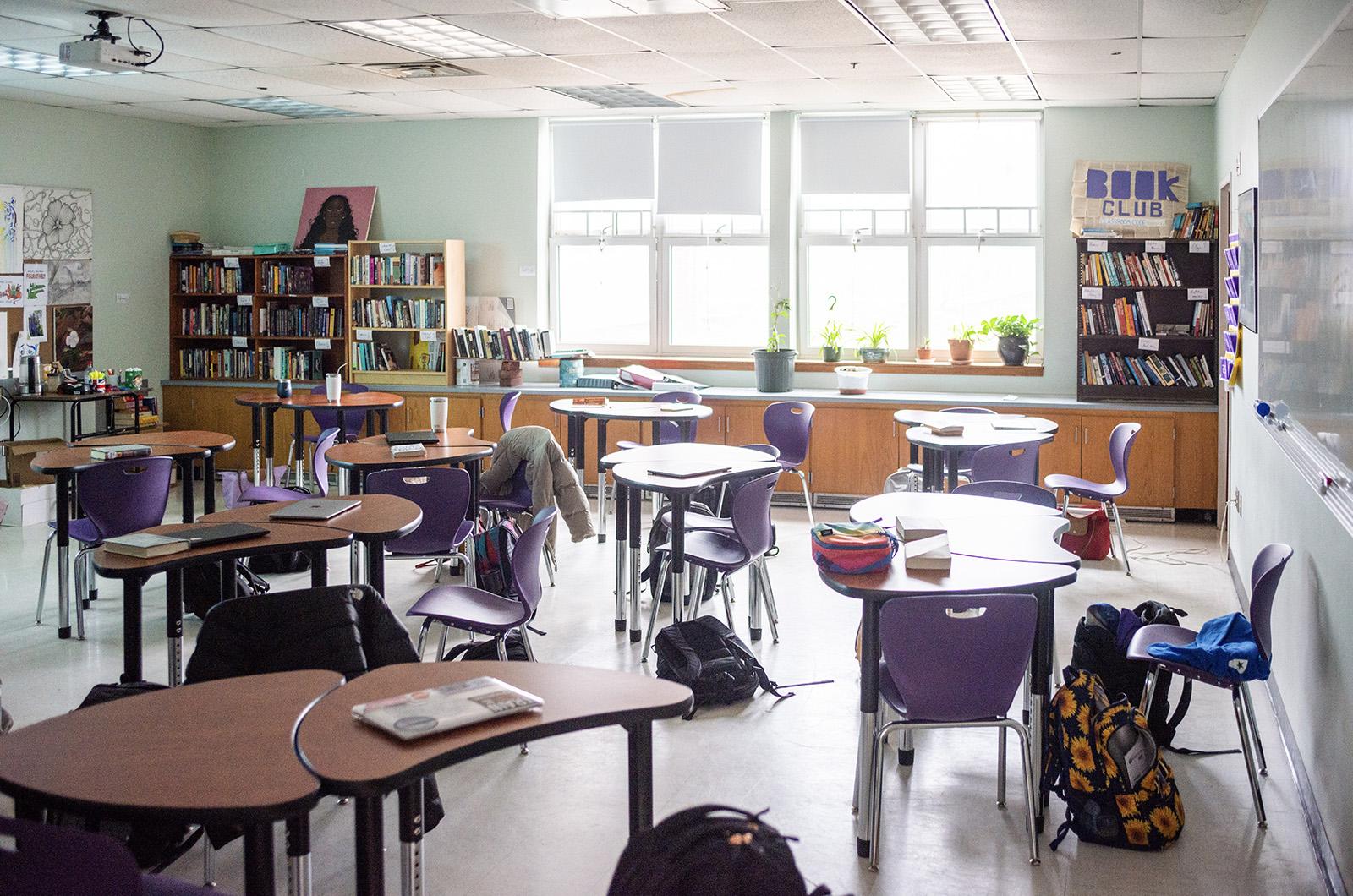The years-long quest to secure state funds for renovating or rebuilding Martha’s Vineyard Regional High School has finally resulted in an offer from the Massachusetts School Building Authority (MSBA).
The MSBA board voted unanimously Wednesday morning to invite the school to undertake a feasibility study, with the state reimbursing more than 38 per cent of the estimated $2 million cost.
“Today’s a huge day. Today’s a day to celebrate,” Island schools superintendent Richie Smith told the Gazette by phone as he drove back from the board meeting in Boston, accompanied by district finance director Mark Friedman and Sam Hart, the high school’s administrator for the MSBA process.
The feasibility study will be the first state-supported step toward a new or completely rebuilt high school, although it does not automatically commit the MSBA to reimbursements for the entire project.
“I do want to emphasize that this invitation to partner on a feasibility study is not approval of a project but is strictly an invitation to the District to work with the MSBA to explore potential solutions to the problems that have been identified,” executive director John K. (Jack) McCarthy wrote in a letter to Mr. Smith after Wednesday’s meeting.
However, as long as the high school project continues to meet the state program’s requirements, it’s expected to remain eligible for reimbursements, although Mr. Friedman said the percentage could be adjusted following the feasibility study.
This was the sixth time the high school committee has applied to enter the state building program, which uses a portion of state sales tax revenue to reimburse a significant percentage of project costs.
“We just applied year after year,” Mr. Friedman told the Gazette Wednesday.
In early 2022, the MSBA provisionally offered a 38.74 per cent reimbursement for the high school project, beginning with the feasibility study, he said. That led to more than a year of unprecedented cooperation among the six Island towns, as they worked with school officials to meet the MSBA’s eligibility requirements.
“We needed a revised regional agreement [and] we needed a cost allocation formula that all six towns on Martha’s Vineyard could agree on, even before we entered eligibility,” Mr. Hart told the MSBA board Wednesday.
The Island was also required to form a building committee and to allocate funding for the feasibility study, which the high school committee pegged at $2 million.
The study is intended to help determine what a building project could look like — whether it’s new construction, a renovation or a combination of the two — and how much it could cost.
“The feasibility study will require us to look at all options,” Mr. Friedman said.
In the past, local funding for the feasibility study proved a stumbling block for the high school’s MSBA applications, which were rejected after town voters failed to agree.
This time around, voters at all six town meetings voiced unanimous support for paying their share, based on a formula that was hammered out last summer by an all-Island committee of elected and appointed town leaders.
“If we hadn’t done that, we wouldn’t have been able to go to the next step,” Mr. Friedman told the Gazette. “We demonstrated that we could get all the towns together.”
A separate tussle this spring in which the three up-Island towns initially voted not to support the high school’s 2024 operating budget, as a lever to end funding for the turf field lawsuit against Oak Bluffs, did not come up in the MSBA board’s discussion Wednesday morning. The track and playing fields are not currently part of the MSBA application, Mr. Smith said.
According to Mr. McCarthy at Wednesday’s meeting, the Vineyard was running out of chances with the state authority.
“I’m surprised we’re here,” said the MSBA executive director. “We talked to the folks there and said, ‘this is your last chance.’ There were times I didn’t think you were going to make it, but perseverance is a beautiful thing and you persevered,” Mr. McCarthy said.
Mr. Hart said the next step in the process will be for the school building committee to select an owner’s project manager (OPM), a firm that will shepherd the feasibility study process, engaging an architect and other professionals needed to assess the school’s condition and draft a series of potential designs.
He said the committee could meet next week or early in July to discuss their process for hiring the OPM.
The MSBA board will then need to sign off on the committee’s choice of OPM, as well as on the OPM’s subsequent choices of other professionals, before the feasibility study can begin, Mr. Smith said.
“All told, this [hiring] could be about a seven to nine-month process,” he said.
The state board will continue to weigh in as the high school project moves through the program, Mr. Smith said.
“We have to get voted in for each step,” he said. “Our community needs to know that we’ll be going on several occasions to the MSBA office to engage in similar meetings.”







Comments (9)
Comments
Comment policy »